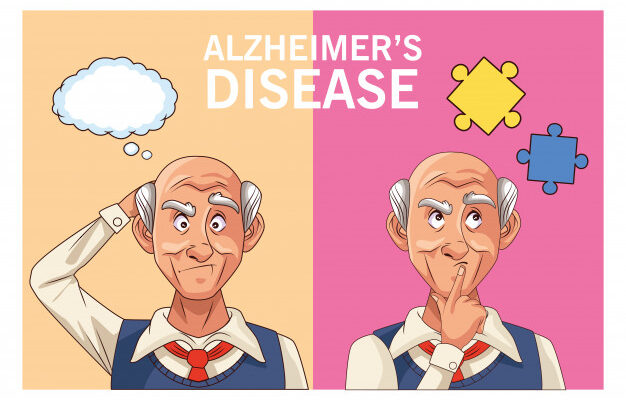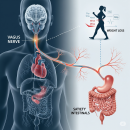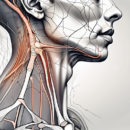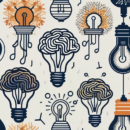DIGESTIVE SYSTEM

Introduction to the Digestive System
The digestive system is completed by the gastrointestinal tract—also known as the GI tract or digestive tract. The GI tract is a sequence of hollow organs connected in a long, twisting tube from the mouth to the anus. The hollow organs that build up the GI tract include mouth, oesophagus, stomach, small intestine, large intestine, and anus. The liver, pancreas, and gallbladder are the hard organs of the digestive system. The small intestine constitutes of three parts. The initial part is known as the duodenum. The jejunum lies in the middle and the ileum is at the base. The large intestine constitutes appendix, cecum, colon, and rectum. The appendix has a finger-shaped pouch linked to the cecum. The cecum is the initial part of the large intestine. The colon is second. The rectum lies at the end of the large intestine.
Why is digestion important?
Digestion is crucial because your body requires nutrients from food and drink to work appropriately and stay healthy. Proteins, fats, carbohydrates, vitamins NIH external link, minerals NIH external link, and water are the main nutrients. The digestive system breaks nutrients into small parts for your body to absorb and consume for energy, growth, and cell repair. Digestion is significant for breaking down food into nutrients, which the body utilizes for energy, growth, and cell maintenance. Food and drink have to be changed into tiny molecules of nutrients before the blood consumes them and transmits them to cells throughout the entire body. The body breaks down nutrients from food and drinks into carbohydrates, protein, fats, and vitamins.
Mouth
The mouth is the initial stage of the digestive tract. Digestion begins here as soon as you take the first bite of the food. Chewing breaks the food into pieces that digested more effortlessly, while saliva helps in mixing with the food to commence the procedure of breaking it down into a form that body can absorb and consume.
Throat
Also known as the pharynx, the throat is the next stop for food that has been eaten. The food starts from this destination and travels to the oesophagus or swallowing tube.
Oesophagus
The oesophagus is a muscular tube that extends from the pharynx to the stomach. Using a series of contractions, called peristalsis, the oesophagus provides food to the stomach. Just a little before the joining to the stomach, there is a “zone of high pressure,” known as the lower oesophagal sphincter. This is a “valve” that works to keep food from passing back into the oesophagus.
Stomach
The stomach is a sac-like organ with powerful muscular walls. In addition to holding the food, it also works as a mixer and grinder of food. The stomach secretes acid and powerful enzymes that last the procedure of breaking down the food. When it leaves the stomach, food takes the shape of liquid or paste. Then, the food moves towards the small intestine.
Small Intestine
The small intestine is made up of three segments namely the duodenum, jejunum, and ileum. The small intestine is a basic long tube loosely coiled in the abdomen. The small intestine continues the procedure of breaking down food while utilizing the enzymes released by the pancreas and bile from the liver. Bile is multipart that helps in the digestion of fat and removes waste products from the blood. Peristalsis (contractions) also performs in this organ, moving food through and mixing it up with digestive secretions. The duodenum is largely accountable for continuing the procedure of breaking down food, together with the jejunum and ileum mainly in control for the absorption of nutrients into the bloodstream.
Mouth and oral structures
Little digestion of food basically takes place in the mouth. However, through the procedure of mastication, or chewing, food gets ready in the mouth for transference through the upper digestive tract into the stomach and small intestine, where the main digestive procedures take place. Chewing is the initial mechanical procedure to which food is subjected. Actions of the lower jaw in chewing are carried out by the muscles of mastication. The sensitivity of the periodontal membrane that surrounds and helps the teeth, rather than the power of the muscles of mastication, decides the force of the bite.
Mastication is not important for enough digestion. Chewing does help in digestion, however, by decreasing food to tiny units and mingling it with the saliva secreted by the salivary glands. The saliva lubricates and moistens dry food while chewing divides the saliva throughout the entire food mass. The movement of the tongue against the solid palate and the cheeks aids to form a rounded mass, or bolus, of food.
Digestion Process
CARBOHYDRATES
Carbohydrates are the sugars, starches, and fibre found in several foods. Carbohydrates are known as simple or complicated, relied on their chemical structure. Simple carbohydrates comprise of sugars present naturally in foods such as fruits, vegetables, milk, and milk products, as well as sugars added during food processing. Multifaceted carbohydrates are starches and fibre present in whole-grain bread and cereals, starchy vegetables, and legumes.
PROTEIN
Foods such as meat, eggs, and beans comprise of large molecules of protein that the body digests into tiny units called amino acids. The body consumes amino acids with the help of small intestine into the blood, which then travels them throughout the entire body.
FATS
Fat molecules are considered as a rich source of energy for the body and facilitate the body to absorb vitamins. Oils, such as corn, canola, olive, safflower, soybean, and sunflower, are examples of healthy fats. Butter, shortening, and snack foods are examples of fewer healthy fats. During the process of digestion, the body breaks down fat molecules into fatty acids and glycerol.
VITAMINS
Scientists categorize vitamins by the fluid in which they dissolve. Water-soluble vitamins consist of all the B vitamins and vitamin C. Fat-soluble vitamins consist of vitamins A, D, E, and K. Each vitamin has a varied role in the body’s growth and health. The body stores fat-soluble vitamins in the liver and fatty tissues, whereas the body cannot effortlessly store water-soluble vitamins and flushes out the additional in the urine.















